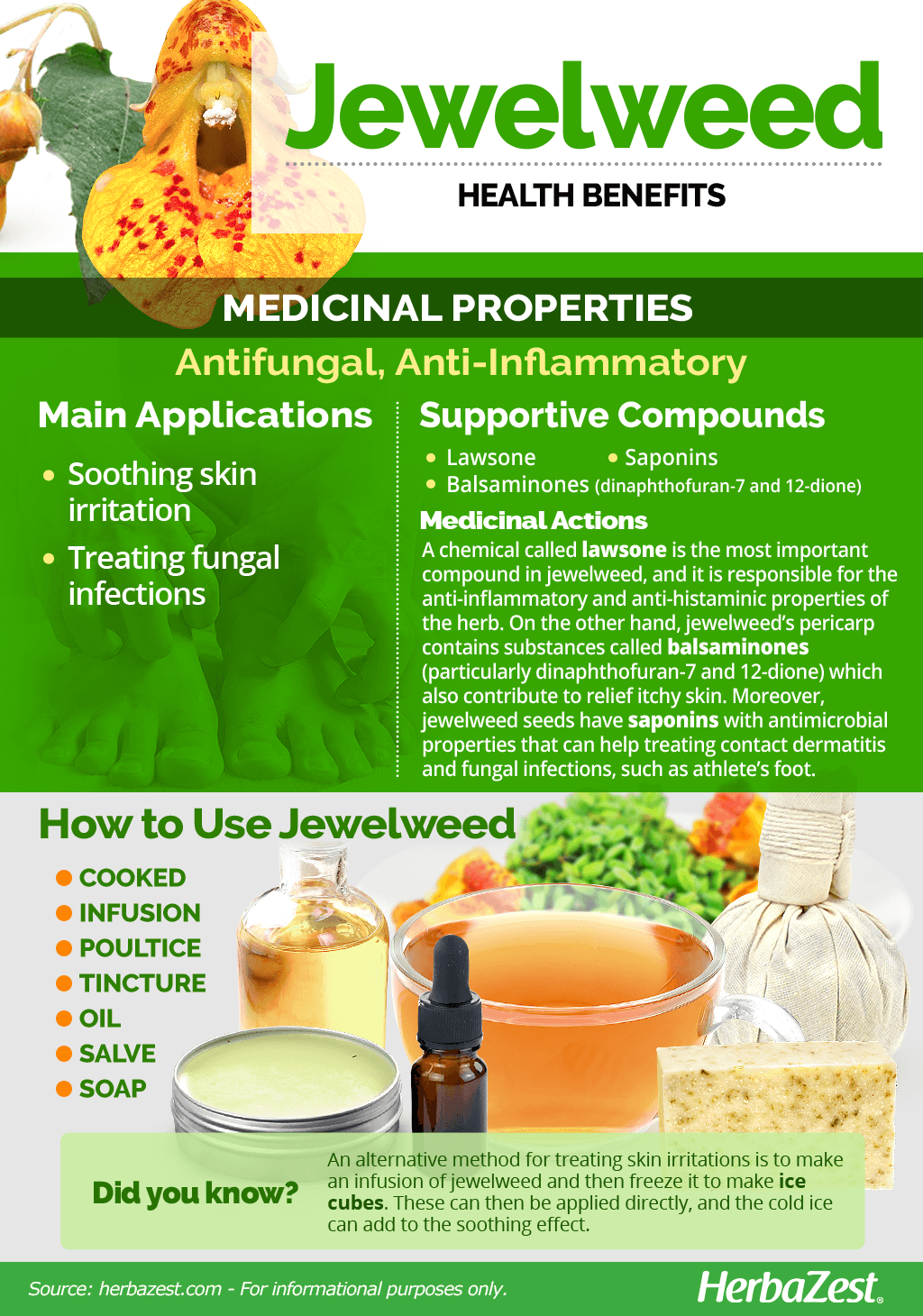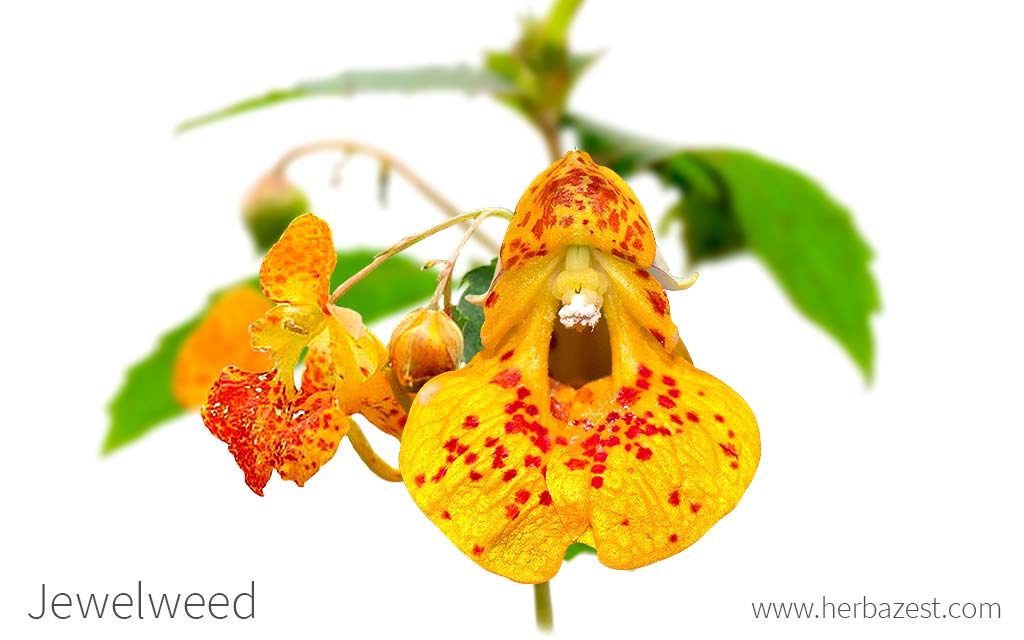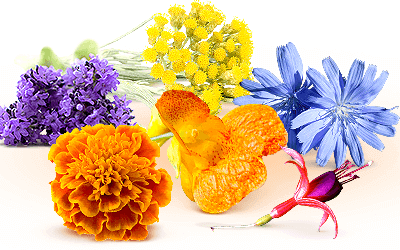Jewelweed originated in North America, and its medicinal uses can be traced back to Native American history. There are many documented remedies with this herb, both for oral and topical use. Jewelweed is also considered an attractive flower - rather than a weed as the name implies - and can now be found around the world.
Jewelweed Medicinal Properties
- Medicinal action Antifungal, Anti-inflammatory
- Key constituents Lawsone, dinaphthofuran-7, 12-dione, saponins
- Ways to use Capsules, Tincture, Poultice, Ointment, Dried
- Medicinal rating (2) Minorly useful plant
- Safety ranking Use with caution
Health Benefits of Jewelweed
Some Native American tribes have used jewelweed, also known as touch-me-not plant, to treat an extensive list of ailments. While the plant is widely known for soothing the effects of poison ivy on skin, jewelweed's properties have been traditionally used for different medicinal purposes, such as:
Soothing skin irritations. The juice extracted from jewelweed contains a substance that works as an anti-inflammatory and antihistamine, which can soothe sore and itchy skin areas.
Treating fungal infections. The sap extracted from jewelweed contains an antifungal agent, making it somewhat effective for skin infections, such as athlete's foot.
Other traditional uses for jewelweed include treating constipation, fevers, hemorrhoids, jaundice, measles, rheumatism, and stomach cramps.
How It Works
A chemical compound called lawsone is responsible for most of jewelweed'a benefits. Lawsone has anti-inflammatory and anti-histaminic properties, making it an effective treatment for rashes and irritations caused by insects, nettles, and poison ivy.1
On the other hand, it has been found that the pericarp of jewelweed contains dinaphthofuran-7 and 12-dione derivatives, collectively known as balsaminones, all of which have anti-itching effects.2,3
Additionally, the seeds of jewelweed contain saponins with antimicrobial properties, which have been shown effective for relieving contact dermatitis and topical fungal infections.4
Jewelweed extracts have been shown effective for preventing and treating contact dermatitis rashes.4
Other herbs with antimicrobial properties are calendula, garlic, echinacea, and nasturtium.
Jewelweed Side Effects
Jewelweed is generally deemed safe for external and internal use; however, it can irritate the digestive system and cause vomiting if consumed in high amounts. It is recommended to seek professional advice before introducing any supplement to a health regimen, particularly during pregnancy or while breastfeeding.
Jewelweed Cautions
Jewelweed has a high mineral content, particularly of calcium oxalate - which tends to accumulate in the body, and it is the most common component of kidney stones. It is safe to consume it in small doses, but ingestion of large quantities can be dangerous. The calcium oxalate can be destroyed by drying or thoroughly cooking the plant. Extra care should be taken by those who are taking calcium supplements or are prone to developing kidney stones.
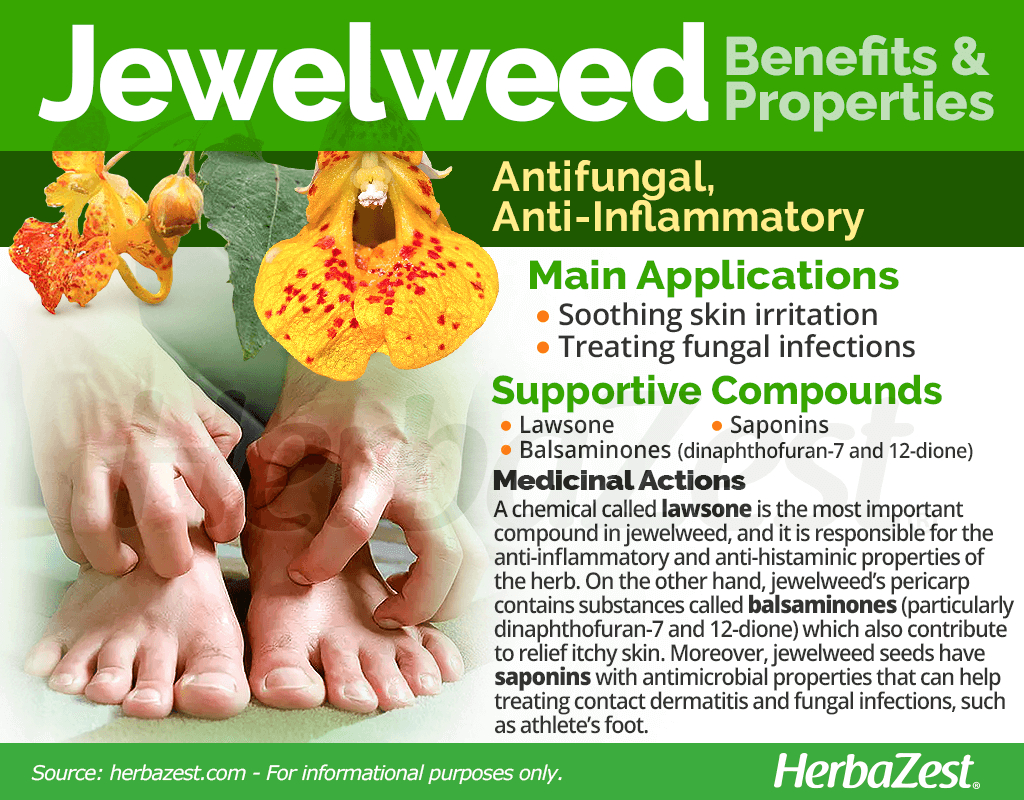
How to Consume Jewelweed
- Edible parts Flowers, Leaves, Stem
- Edible uses Beverage
The most well-known health benefit of jewelweed is treatment of poison ivy; therefore, it is commonly used in the form of a poultice made from the stem of the plant. Aside from this, jewelweed can be used in a variety of homemade and commercial medicinal preparations.
Natural Forms
Cooked. Young shoots from the jewelweed plant can be prepared as cooked greens by boiling them for 10 - 15 minutes in two changes of water. This is necessary to reduce their calcium oxalate content. For healthy individuals, it is safe to eat the succulent shoots raw, but in moderation.
Infusion. Jewelweed tea is most often made from the leaves, but the roots, stems, and flowers can also be used. It is said that regular consumption of this herb helps the body build resistance to poison ivy and nettle stings.
Poultice. The mashed stem of the plant can be made into a simple paste to be applied directly to skin or on a gauze on rashes caused by poison ivy and nettle. It should not be rinsed for a few hours in order to see the optimal benefits.
An alternative method for treating skin irritations is to make an infusion of jewelweed and then freeze it to make ice cubes. These can then be applied directly to skin for soothing effects.
Herbal Remedies & Supplements
Tincture. In this concentrated form, jewelweed can be used to treat rashes and stings all year round. A few drops can be poured onto a cotton pad and applied to the affected skin.
Oil. It is possible to infuse jewelweed into an organic oil, like olive oil or similar. This will enable the properties to be preserved in a form that can be used when necessary.
Salve. This type of ointment is recommended for the treatment of skin irritations and athlete's foot. Apply topically as required to soothe rashes and treat fungal infections.
Soap. A popular way to use jewelweed is as a medicinal soap, meant for treating poison ivy, itching, and skin rashes.
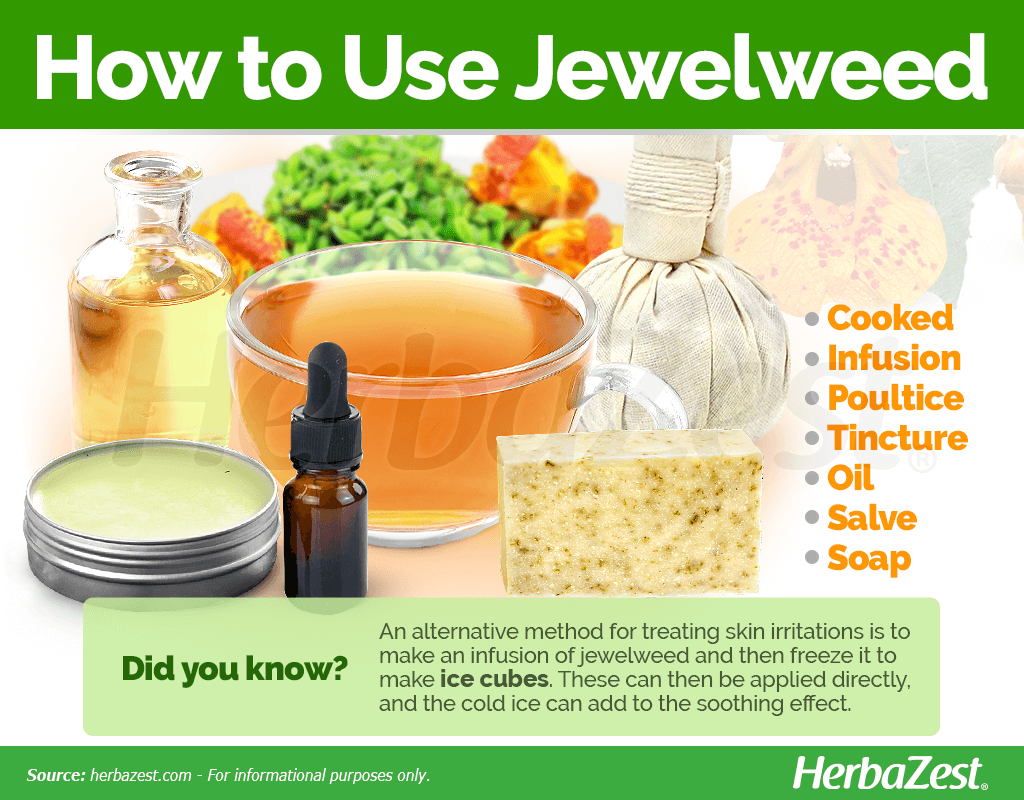
Growing
- Life cycle Annual
- Harvested parts Flowers, Leaves, Stem, Shoot
- Light requirements Full shade
- Soil Medium (loam), Well-drained
- Growing habitat Cool temperate regions
- Pre-germination seed treatment None
- Planting time Early spring
- Plant spacing average 0.25 m (0.82 ft)
- Potential insect pests Mealybugs
- Potential diseases Alternaria blight, Botrytis leaf blight, Downy mildew, Powdery mildew
- Potential animal pests Birds, Deer, Rodents, Chipmunks, Rabbits, Squirrels
Jewelweed is a hardy plant, tolerant to a variety of environments. It can compete with other resilient plants and thrive. Its pretty flowers attract hummingbirds, bumblebees, and butterflies to the garden.
Growing Guidelines
Jewelweed prefers well-watered soil, in a shaded area.
The jewelweed fruits shrink and split when they dry, scattering the seeds in all directions.
The jewelweed plant blooms from July to October, continuing until the plant is killed by the frost.
Jewelweed seeds should be sown in early fall.
The ideal temperature for jewelweed seeds germination is 41°F (5°C).
The jewelweed plant will grow best in soils with a pH ranging from 3.4 - 7.7.
Additional Information
- Other uses Textiles, Dye, Soapmaking
Plant Biology
The jewelweed plant can vary in size, but it will usually grow between two and five feet (60 - 152 cm) high. Its flowers are yellow or orange with red spots and are up to 1.25 inches long (3 cm), appearing single or in clusters. The stems are weak, pale green, and translucent. The leaves are pale green, but when they are underwater, they look silver and shimmer.
Classification
Jewelweed (Impatiens capensis) is part of the Balsaminaceae family, commonly known as the touch-me-not family, which contains a single genus - Impatiens - with 13 species known to date. The name jewelweed is said to be due to the fact that when dew accumulates on the leaves, the droplets make the leaves become silver, shining like a jewel. The name touch-me-not comes from the fact that the seedpods are so sensitive that they will burst if touched.
Related Species
Out of the 13 species of Impatiens, the most commonly found are Impatiens noli-tangere, Impatiens capensis, Impatiens pallida, and Impatiens walleriana. These species can be found across Europe and the U.S., and are commonly grown in gardens. Jewelweed is a favorite among florists, as all the varieties are so colorful and attractive.
Historical Information
It is known that jewelweed was first used by Native Americans thousands of years ago to treat various medical conditions. When pioneers saw the plant being cultivated and valued for its health benefits, they too began to use it in the same way. The treatments, therefore, became known across the world. Jewelweed's genus name, Impatiens, is the Latin word for impatient, which alludes to its hypersensitive capsules, which burst at the slightest touch. Interestingly, one species name - capensis - is a misnomer; it comes from the word 'cape', as in Cape of Good Hope in South Africa, where the taxonomist had believed the plant originated.
Other Uses
Dye. This plant can also be used as a natural food colorant or dye. The orange-red color can be extracted from the flowers and used in a range of ways, including on hair and skin - similar to henna. Using dyes from jewelweed has been a popular method of dyeing textiles in the past.
Many consider jewelweed to be an invaluable treatment for different medical conditions, particularly in soothing skin irritations and healing fungal infections. While jewelweed is easy to cultivate, it can also be found in public areas, which makes using it in medicinal ways very accessible.
Sources
- Brandeis University, medicinal Plants of the Northeast | Impatiens capensis & Impatiens pallida, Spotted Jewelweed & Pale Jewelweed
- Georgia Department of Agriculture, Jewelweed, A Native Jewel
- Health Guidance for Better Health, Jewelweed Uses and Benefits
- Hoosier Home Remedies, pp. 124
- Lake Forest College, Impatiens capensis (spotted touch-me-not, jewelweed) Balsaminaceae
- Let's Get Natural With Herbs, pp. 238
- National Kidney Foundation, Calcium Oxalate Stones
- Natural Standard Herb & Supplement Guide, pp. 442
- Penn State University, Species Pages, Impatients capensis
- The University of North Carolina at Charlotte, Jewelweed, the wildflower with exploding seed pods
- Tyler's Herbs of Choice, pp. 180
- United States Department of Agriculture, Natural Resources Conservation Service, Classification
- University of Washington, Jewelweed (Impatiens noli-tangere)
- USDA Forest Service, Jewelweed (Impatiens capensis)
- Wildflowers and Other Plants of Iowa Wetlands, pp. 193
- Wilkes University, Biology Department, Medical Attributes of Impatiens sp. - Jewelweed, Touch-me-not
Footnotes:
- Journal of Ethnopharmacology. (2012). The effectiveness of jewelweed, Impatiens capensis, the related cultivar I. balsamina and the component, lawsone in preventing post poison ivy exposure contact dermatitis. Retrieved October 19, 2023, from: https://pubmed.ncbi.nlm.nih.gov/22766473/
- Scientific Reports. (2020). Comparative transcriptome analysis to identify candidate genes involved in 2-methoxy-1,4-naphthoquinone (MNQ) biosynthesis in Impatiens balsamina L. Retrieved October 19, 2023, from: https://www.ncbi.nlm.nih.gov/pmc/articles/PMC7527972/
- Journal of Natural Products. (1998). Antipruritic dinaphthofuran-7,12-dione derivatives from the pericarp of Impatiens balsamina. Retrieved October 20, 2023, from: https://pubmed.ncbi.nlm.nih.gov/9748380/
- Journal of Ethnopharmacology. (2015). Efficacy of the saponin component of Impatiens capensis Meerb.in preventing urushiol-induced contact dermatitis. Retrieved October 19, 2023, from: https://www.sciencedirect.com/science/article/abs/pii/S0378874114009052
